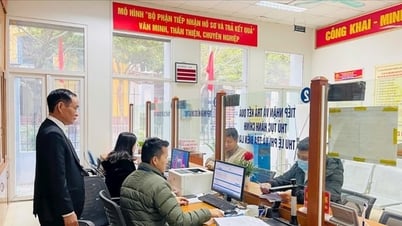Universities in the US are facing a problem with “ghost” students. Specifically, these students are created by AI tools, with sophisticated profile components, taking the place of thousands of real students to steal millions of dollars in financial aid.
Jordan Burris, vice president at Socure, a company that uses AI to verify and combat fraud, said the scale of the “ghost” student problem is staggering. Socure’s client base estimates that 20-60% of the students who apply are fake. They are created at scale by fraudsters using AI, who then enroll in courses and apply for financial aid.
"Ghost" students created by AI for financial gain. Photo: GenAI
Fraudsters are particularly targeting courses that maximize aid potential, said Mike McCandless, vice president of student services at Merced Community College. Social sciences and online classes with large student populations and many credits are popular choices. In the spring semester, Merced disqualified half of its initial 15,000 registrations due to fraud. Of the next 7,500 or so, 20 percent were found to be fraudulent and disqualified, freeing up spots for real students.
The Battle Between Crime and University
Maurice Simpkins, president of technology firm AMSimpkins & Associates, said many graduates have had their identities stolen and re-enrolled at their old college, or enrolled at another institution using an oldeducational email address.
Scammers also use temporary and disposable emails to register for classes before obtaining an “edu” email address, which qualifies them for student discounts on hardware, software, and access to the school’s cloud storage services.
Over the past 18 months, schools have blocked thousands of fake students for having the same mailing address, hundreds of similar emails that differed by just one digit, or phone numbers and email addresses that were created just before applying.
Thousands of high school students lose opportunities because "ghost" students take up their places. Photo: Fortune
Michael Fink, director of technology at Chaffey Community College, said the attacks can happen in minutes on a large scale, often in the quiet of the evening. Bryce Pustos, the school’s director of administrative systems, said that at the beginning of last fall’s enrollment period, when faculty went to bed, no students had yet signed up. But when they woke up, the class was full and there was a long waiting list.
Laqwacia Simpkins, CEO of education technology company AM Simpkins & Associates, notes that scammers often choose times to carry out their scams such as holidays, the beginning or end of semesters, registration deadlines, peak days - when staff are stressed or systems are less monitored.
Consequence
Criminal networks are profiting handsomely from this scheme. According to the U.S. Department of Education, about $90 million in aid is being distributed to students who are not eligible, and about $30 million is being given to “dead people”—people whose identities were stolen to enroll. In early June, the agency announced that it had found nearly 150,000 suspicious identities on federal student aid applications and asked colleges to verify the identities of first-time Free Application for Federal Student Aid (FAFSA) applicants.
$90 million in government aid was fraudulently obtained. Illustration: Govetech
Financial fraud through stolen identities has reached levels that threaten federal student aid programs. “When fraud is rampant, depriving eligible students of aid, disrupting college operations, and robbing taxpayers, we have a responsibility to act,” said U.S. Secretary of Education Linda McMahon.
The U.S. Department of Education issued a temporary rule on June 13 requiring students to present government-issued ID to colleges to prove their identity when applying for federal financial aid for the first time during the summer semester. The agency is developing more advanced screening measures for the fall semester.
Jesse Gonzalez, associate director of IT services at Rancho Santiago Community College, said colleges are creating barriers that discourage scammers because they require more processes to get results. But they also need to consider how they can provide opportunities for disadvantaged or undocumented students. “The more barriers you put in place, the more students are impacted, and often the students who need the most help,” he said.
Source: https://khoahocdoisong.vn/dung-ai-tao-sinh-vien-ma-de-chiem-doat-tien-ho-tro-post1548233.html


































































































Comment (0)